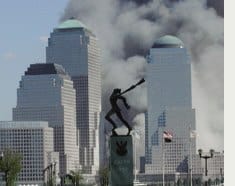

Photo:/www.kul.pl
Polish children of Pahiatua: Survivors of an icy hell
On 30 October 1944, the American transport ship USS General George M. Randall entered Wellington Harbour in New Zealand, carrying 733 Polish children who had escaped the brutal conditions of Siberia, accompanied by 105 carers. While many envision those deported to the USSR as frozen labour camp inmates labouring in the taiga, few realise that, following the signing of the Sikorski-Mayski Pact, some of these individuals found refuge in distant lands such as Africa, India, Mexico, and New Zealand.
Just a year prior, in the summer of 1943, another American vessel arrived in Wellington, bringing Poles, including 300 children. These passengers were not permitted to disembark, as the ship was destined for Mexico. It was Countess Maria Wodzicka, the wife of the Polish Consul General in Wellington, Dr. Kazimierz Wodzicki, who took it upon herself to provide assistance to these desperate emigrants. The generosity of the New Zealand people was overwhelming, and Mrs. Wodzicka successfully engaged the interest of Janet Fraser, the wife of the New Zealand Prime Minister. Prime Minister Fraser recognised the Poles from Anders’ Army as allies in the fight against Germany.
The history of Polish deportations began when, as a consequence of a German-Soviet agreement in 1939, the USSR annexed 52 per cent of Poland’s territory. This led to immediate and widespread deportations of Polish citizens to Siberia, peaking in the years of 1940-1941. The exact number of Poles deported during World War II remains a subject of debate, with estimates ranging from one to one and a half million. The communist regime meticulously obscured the extent of its crimes.
It is vital to recognise that entire families were among those transported to the East, which meant that hundreds of thousands of children were exposed to the unimaginable cruelty of the Soviet system. The situation for these deportees shifted dramatically after Hitler’s invasion of the Soviet Union. In response to the setbacks faced by the Red Army, Stalin, fearing further defeats, decided to leverage the Poles to combat his former ally, thus permitting the formation of a Polish army. General Władysław Anders, who had endured a harrowing experience of imprisonment and interrogation in Soviet prisons, emerged as the commander of these Polish forces.
Understanding that the Soviet 'ally’ would view Poles merely as cannon fodder, General Anders orchestrated the evacuation of not only 80,000 soldiers from the USSR to Iran but also 40,000 civilians, including nearly 14,000 children liberated from the depths of Siberian hell. Among those who played a pivotal role in rescuing young Poles from these inhuman conditions was Hanka Ordonówna, a star of pre-war cinema and cabaret. Although she successfully escaped the Soviet grasp, the toll of her experiences in the so-called 'paradise’ of communism severely affected her health, ultimately leading to her tragic death from typhus in Beirut.
The refugees were subsequently transported from Iran to various countries, including Kenya, Tanzania, Uganda, India, South Africa, Palestine, Mexico, and New Zealand, where they were embraced with open arms. Notably, only one of the children travelled with their mother; the rest were orphans.
New Zealand’s Prime Minister, Fraser, made the decision to accept the 733 children, arranging for them to be housed in a specially prepared facility in Pahiatua. A former prisoner-of-war camp was renovated and expanded to include a children’s settlement, a school, an infirmary, a library, a kitchen, and a dining room. The Pahiatua campus operated until 1949.
Peter Fraser was acutely aware of the plight of Poles in a nation under Soviet influence. ‘It is our government’s desire for these young people to have unlimited freedom of choice and that their choice be based solely on their future happiness,’ he informed Szczęsny Zaleski, representative of the Ministry of Social Welfare of the Polish government in exile.
This supportive stance from the New Zealand authorities thwarted attempts by SB officers to persuade young emigrants to return to the People’s Republic of Poland. The agents even pressured relatives of orphans to write letters urging their return, but fortunately, these efforts failed to yield the desired results.
As a result of this compassionate response, not only has a vibrant Polish community flourished in New Zealand, but it has also become a model community. Efforts by communist agents to create division among Polish communities in the United States and the United Kingdom were unsuccessful. The reason is simple: all those who arrived in Wellington Harbour in 1944 shared a close bond, having grown up and been educated together, forming strong connections that would last a lifetime. Consequently, the communist intelligence services were unable to infiltrate the Polish community in New Zealand. Many of these young Poles went on to complete their studies, achieve professional success, and become integral members of New Zealand’s elite.
In response to the introduction of martial law in Poland, Polish expatriates organised a remarkable march of 12,000 people in support of the Solidarity movement. Their efforts also facilitated the arrival of 300 refugees from communist Poland to New Zealand. Today, the Polish community in New Zealand comprises approximately 4,000 individuals, including nearly 200 of the ‘children of Pahiatua.’ In recognition of their contributions, a street in Warsaw was named after Peter Fraser in 2010, and the following year, Kazimierz Wodzicki and Maria Wodzicka were posthumously honoured with the Commander’s Cross of the Order of Polonia Restituta.
In 2018, President Andrzej Duda designated a square in Wellington to commemorate the Polish Children, and four years later, Peter and Janet Fraser were posthumously awarded the Virtus et Fraternitas Medal for their invaluable assistance to young Poles.
Juliusz Woźny
Source: DlaPolonii.pl




